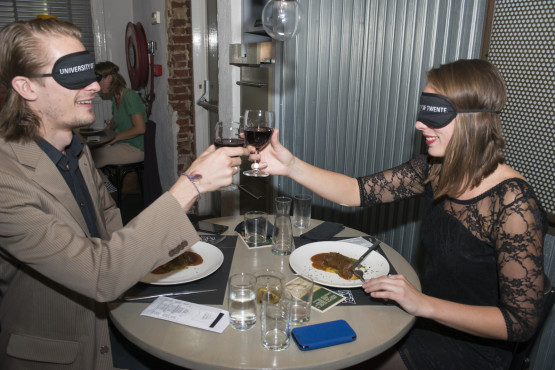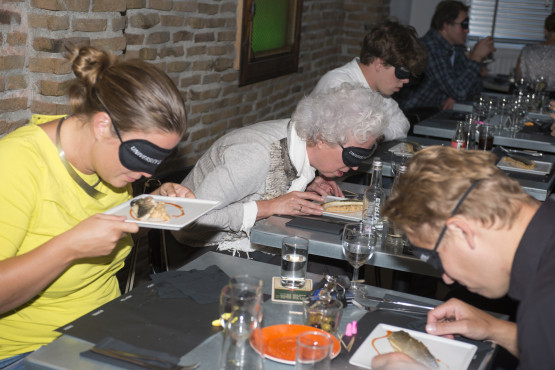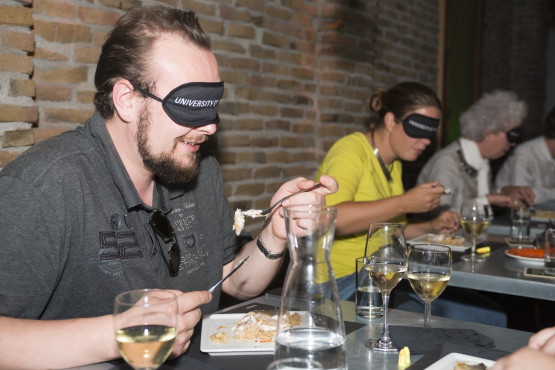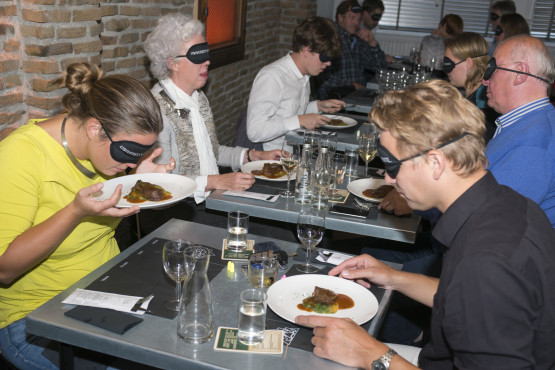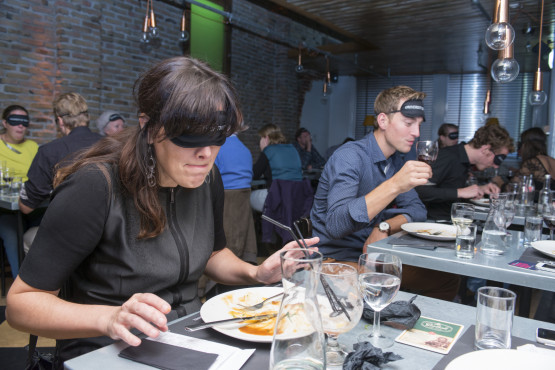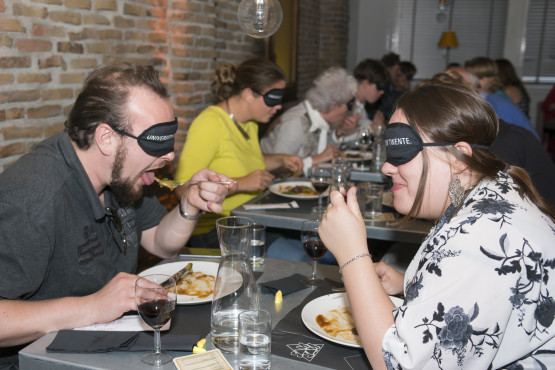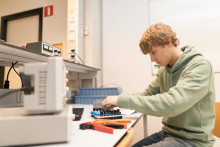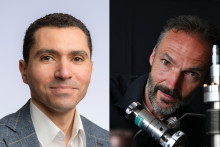The answer would be: intense, interesting and slightly unsettling. After all, not having a clue what is on the plate in front of you and where exactly to stick your fork can be unnerving.
The basic idea behind the concept of dark dining is that removing vision enhances the gastronomic pleasure, because you are forced to concentrate on other senses than sight. It's true that your taste and smell might switch into overdrive during a 'blind' dinner and the food experience is definitely more intense. However, using your senses in such an unusual way is also distracting.
Feeling of uncertainty
'It’s very difficult to use senses in other ways than you are used to. People feel uncertain, less in control. They have to trust the staff, while figuring out how to use cutlery without seeing it,' explains Mirjam Galetzka, a UT researcher who took on the role of a 'tasting professor' that guided the guests through the dinner in the dark. 'People might feel a bit anxious, but it is a fun anxiety, a thrill such as the one you feel in an amusement park.'
The experience was surely thrilling. The most difficult part was not determining what you were about to consume, but the actual physical act of eating. Finding the food on your plate and placing the right amount of it onto your fork is rather complicated when you have a blindfold covering your eyes. For that reason, among others, it can be hard to focus on the taste alone.
Special menu
The delicious five-course menu for the dark dinner was specially created by the Sam Sam chef, Mark Tukker. As he explained during an after-dinner talk, Tukker had paid a special attention to combining different and often contrasting flavors and textures within all the dishes and pairing them well with served drinks.
He certainly succeeded. Imagine biting into a sweet pie with figs and tasting a salty cheese in the very next bite. The direct combination of sweet and salty might not be so surprising if clearly visible, but it was highly confusing and intriguing for a 'blind' guest.
'We tried to incorporate a special sensory experience with each dish,' describes Mirjam Galetzka. 'With one dish we asked the visitors to use earplugs, during another we played ocean sounds and during one course we let them try the difference in temperature - first eating the meal hot, then with an ice cube. But there is so much going on in one dish, it is a difficult experience. That´s also why we asked the guests to take photos of their meals - while blindfolded - so they would get the visual input later.'
Next year
Galetzka was asked to join the event because of her research, which focuses on impact of design and environment on consumers. One of the topics she studies is the influence of lighting, therefore it was logical for her to participate in the first ever Twente Science Night with the theme 'Celebrate the Light'.
And as she says, even though it was her first experience with dark dining, she is already thinking about the next year’s program. 'Hopefully we can plan an even more multisensory experience.' Hopefully they can, since it’s the organizers’ intention to make the upcoming edition of Twente Science Night even bigger and better.
